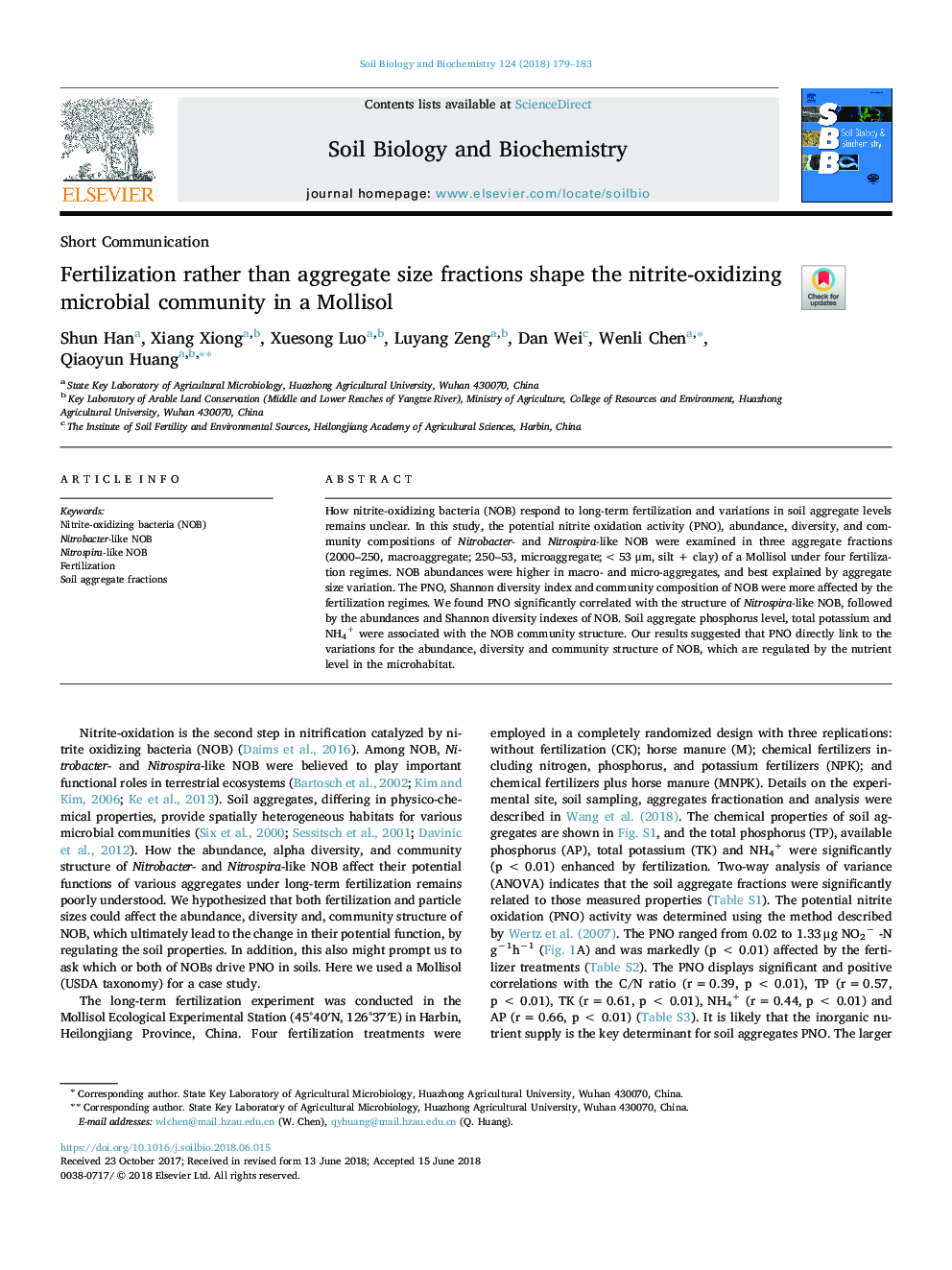| Article ID | Journal | Published Year | Pages | File Type |
|---|---|---|---|---|
| 8362580 | Soil Biology and Biochemistry | 2018 | 5 Pages |
Abstract
How nitrite-oxidizing bacteria (NOB) respond to long-term fertilization and variations in soil aggregate levels remains unclear. In this study, the potential nitrite oxidation activity (PNO), abundance, diversity, and community compositions of Nitrobacter- and Nitrospira-like NOB were examined in three aggregate fractions (2000-250, macroaggregate; 250-53, microaggregate; <53 μm, silt + clay) of a Mollisol under four fertilization regimes. NOB abundances were higher in macro- and micro-aggregates, and best explained by aggregate size variation. The PNO, Shannon diversity index and community composition of NOB were more affected by the fertilization regimes. We found PNO significantly correlated with the structure of Nitrospira-like NOB, followed by the abundances and Shannon diversity indexes of NOB. Soil aggregate phosphorus level, total potassium and NH4+ were associated with the NOB community structure. Our results suggested that PNO directly link to the variations for the abundance, diversity and community structure of NOB, which are regulated by the nutrient level in the microhabitat.
Related Topics
Life Sciences
Agricultural and Biological Sciences
Soil Science
Authors
Shun Han, Xiang Xiong, Xuesong Luo, Luyang Zeng, Dan Wei, Wenli Chen, Qiaoyun Huang,
